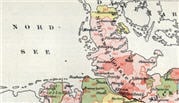Source Information
About Falerna, Catanzaro, Calabria, Italy, Civil Registration, 1747-1936
The keeping of vital records for the unified Kingdom of Italy started in 1866. In the southern part of the country, formerly under the Kingdom of The Two Sicilies, it started in 1809 with the exception of Sicily in 1820.
This database contains births, marriages, marriage banns, deaths, and allegati (enclosures or supplemental records) for comuni (towns) in the southern Italian region of Calabria from 1810-1936. This database currently contains records for the town of Falerna, in the province of Catanzaro. The town of Falerna encompasses the frazioni (hamlets) of Castiglione Marittimo and Falerna Scalo. Records for these localities will also be found among these records.
Reading the Records:
Depending on the year, these records are either free-form hand written paragraphs or pre-printed forms with hand-written information entered into fields. Records from earlier years are of the hand written paragraph type, while records from more recent years contain the pre-printed forms.
Each record is assigned a record number that is unique to that year. This record number is written (either numerically or spelled out) in the margin. The primary person’s (or people’s) names are usually written below this. This makes searching for a particular person page by page fairly easy.
Sometimes there will be marginal notes written on a record. These marginal notes generally contain other vital information for the individual that the record is about. For example, on a person’s birth record you may see information written in the margin regarding that person’s marriage and/or death.
What Information is Listed:
The amount of information listed for an individual can vary according to record type, form type, year, and the regulations governing vital records at the time they were recorded. However, the following information is generally available for each record type. When it is available in the original record, it has been transcribed by Ancestry.
Births:
- Name of child
- Gender of child
- Date of record
- Child’s birth date
- Child’s birthplace
- Parents’ names
- Parents’ ages
- Parents’ residences
Additional information may be listed in the record and can be found by viewing the corresponding image. For example, often the parents’ fathers’ names are listed, as are the parents’ occupations, and the witnesses’ names (who are sometimes family members). In addition, baptismal dates and the name of the parish are usually listed for records from 1816-1866.
Marriages:
- Names of bride and groom
- Date of record
- Bride and groom’s parents’ names
- Bride and groom’s birth dates
Additional information may be listed in the record and can be found by viewing the corresponding image. For example, the bride and groom’s birthplaces, residences, and occupations are often listed. If their birthdates are not listed, their ages at the time of the marriage may be listed instead.
Deaths:
- Name of deceased
- Date of record
- Deceased’s parent’s names
- Age at time of death
Additional information that may be listed in death records includes the residence and birthplace of the deceased, the residence of the parents, and the names, residences, and ages of the people reporting the death (who are sometimes family members or neighbors).
Enclosures (Allegati):
Allegati are supplemental records and documents that were needed to compile the actual birth, marriage, or death record. There are many different types of records and documents that could be included as allegati Some examples include notes from hospitals regarding births or deaths, notes from other towns or foreign countries if a birth or death occurred in that place and not the person’s usual place of residence, marriage files, marriage banns, declarations of intention to marry, and information on illegitimate children when the parents have decided to marry.
Information available in the allegati varies greatly according to the types of records and documents included. There may be several pages of records that pertain to an individual or couple. Be sure to view the next few images following the first image on which you locate an individual in order to obtain all possible information from the record.
Marriage Banns (Pubblicazioni):
Pubblicazoni consist of copies of the marriage banns. When a couple wanted to be married it was customary for them to post their intentions on the door of the church three consecutive Sundays before their marriage was to take place. These records were copied into volumes or books comprised only of pubblicazioni. The original banns posted to the church door may be found in the marriage allegati.Information in addition to the names of the bride and groom is available but is dependent on the specific documents provided for each marriage. Like the allegati, there may be several pages of information that pertain to an individual or couple. Be sure to view the next few images following the first image on which you locate an individual in order to obtain all possible information from the record.
There may not be pubblicazioni records included in this database for every year that there are marriages. Be sure to also check the allegati though for other pubblicazioni records.
Indexes:
There are hand-written annual and decennial indexes for many of the records. These indexes are only browseable and are organized according to record type and year. Generally these indexes will list the name of the primary person and their record number. Sometimes the primary person’s father’s and mother’s names will be listed as well. This is helpful for distinguishing between primary individuals who have the same name.
 Need help with the Italian language?
Need help with the Italian language?